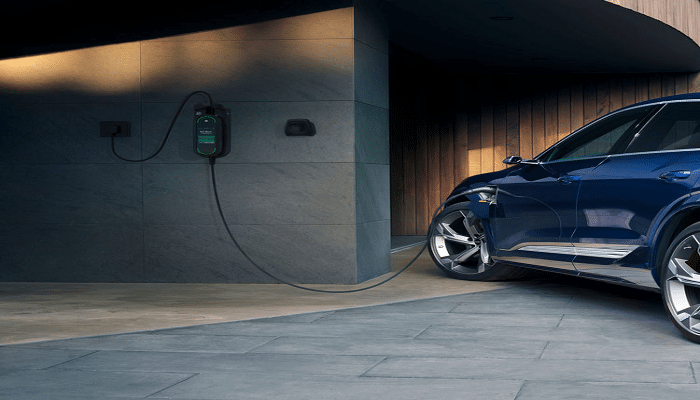Auto
Preventing Blackouts with Intelligence: Audi E-Tron is Ready for Grid-Optimized Charging

- Dynamic and delayed charging can relieve the local power grid
- Smart meter gateway as the new module in the domestic power grid enables intelligent communication between the grid operator and electric car
- Audi e-tron and charging system connect meet technical requirements
When several electric cars are charging at the same time, the street will go dark – that is one gloomy vision of the future that skeptics of electric mobility are painting. As part of a small-scale test, Audi has found a clear answer to this problem: Intelligent and grid-optimized charging relieves the grid and can help to increase the acceptance of electric mobility further. The Audi e-tron models and the charging system connect are already prepared and ready.
As part of a research project, Audi collaborated with GISA and other partners to simulate an overload scenario in the local power grid: multiple electric cars charging simultaneously and with high power on a street supplied by a local network transformer.
What is known as grid-optimized charging is designed to counteract this scenario through the intelligent management of charging procedures and thereby prevent a grid overload. Dynamic management of the charging procedure is achieved through targeted communication between the electric car and the grid operator. In practice, this will mean delayed charging, taking into account the desired time of departure and the actual load in the power grid. At the end of the day, the test shows a win-win situation: The electric car uses downtime to fully charge with dynamic charging capacity adjustment while also relieving the power grid without restricting the customers’ mobility needs. This is made possible by new modules in the domestic power grid that allow the house, the electric car, and the power grid to speak the same language.
Digital power connection: the SMGW
The central component is what is known as a smart meter gateway (SMGW) – a device that is already mandatory today if a household’s power consumption exceeds 6,000 kWh per year. The SMGW establishes a highly secure data connection between the house and the grid operator via a certified IT backend. All necessary information and control signals are transmitted in a targeted manner – either to the home energy management system (HEMS) or directly to the charging system connect that Audi offers as an option.
This allows the charging capacity of the Audi e-tron or Audi e-tron Sportback to be reduced as required – up to 11 kW as standard and by up to 22 kW upon request. Both models are equipped with the necessary intelligence, and Audi intends to provide its future electric models with this ability as well.
Outlook: individual charging management for each car
In the medium term, the new networking technology will allow the charging capacity, charging time, and charging duration to be controlled for each car. In addition, some attractive prospects may arise: A customer who is able to charge their Audi e-tron at work could accept certain limitations while charging at home, for example. In return, they would obtain the power from their provider at a discounted price.
Intelligent charging of electric cars is an important element of the sustainable energy industry of the future. Provided that use is made of the potential, it may also be possible to use electric cars as flexible storage devices for solar and wind power – a resource with very inconsistent availability. AUDI AG has set itself ambitious targets on the way to emissions-free mobility: The company is working on making its vehicle fleet CO2-neutral by 2050. In order to achieve this aim, Audi is pursuing a broad electric offensive that involves launching around 20 fully electric models by 2025.
Connectivity: participants of the energy industry speak a common language
The technical standards and communication protocols necessary for grid-optimized charging have already been drawn up. The new DKE application rule AR-E 2829-6, which describes the exchange of information between the domestic grid connection and the energy industry, is the main guideline. The EEBUS data model serves as the communication protocol. It was developed by the EEBUS e.V. initiative in which Audi is involved as well. It aims to connect the participants of the future energy industry in Europe on the basis of a common language.
Research project: four strong partners for Audi
Audi worked with highly specialized partners on the pilot project in Chemnitz and contributed its extensive expertise in the areas of electric mobility and charging infrastructure. IT service provider GISA GmbH functioned as the initiator of the project and administrator of the SMGW. The software for the backend was provided by Robotron Datenbank-Software GmbH. KEO GmbH developed the software for the communication interface of the SMGW. EMH metering GmbH & Co KG provided the hardware for the intelligent measuring system.
SOURCE: Audi






















































